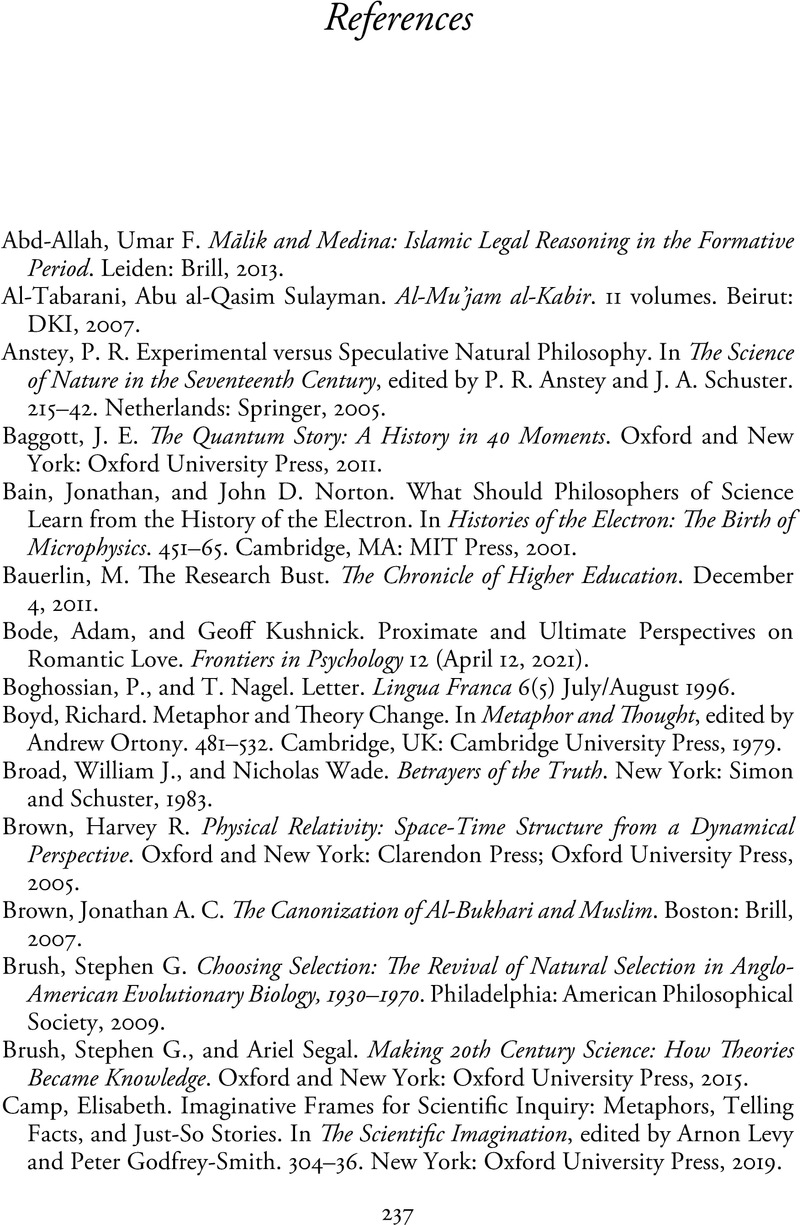Book contents
- Do the Humanities Create Knowledge?
- Do the Humanities Create Knowledge?
- Copyright page
- Dedication
- Epigraph
- Contents
- Preface
- Acknowledgments
- Chapter 1 Introduction
- Chapter 2 What Would the Community Think?
- Chapter 3 Canon and Consensus
- Chapter 4 Knowing What Matters
- Chapter 5 In Defense of How Things Seem
- Chapter 6 Reading What Lies Within
- Chapter 7 Humanities Victorious?
- Chapter 8 Of Interest
- Chapter 9 The Hoax and the Humanities
- Chapter 10 Conclusion
- References
- Index
- References
References
Published online by Cambridge University Press: 10 November 2023
- Do the Humanities Create Knowledge?
- Do the Humanities Create Knowledge?
- Copyright page
- Dedication
- Epigraph
- Contents
- Preface
- Acknowledgments
- Chapter 1 Introduction
- Chapter 2 What Would the Community Think?
- Chapter 3 Canon and Consensus
- Chapter 4 Knowing What Matters
- Chapter 5 In Defense of How Things Seem
- Chapter 6 Reading What Lies Within
- Chapter 7 Humanities Victorious?
- Chapter 8 Of Interest
- Chapter 9 The Hoax and the Humanities
- Chapter 10 Conclusion
- References
- Index
- References
Summary

- Type
- Chapter
- Information
- Do the Humanities Create Knowledge? , pp. 237 - 246Publisher: Cambridge University PressPrint publication year: 2023

